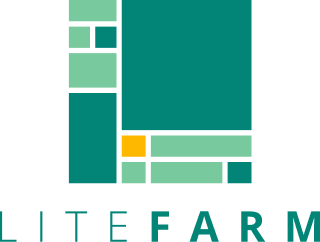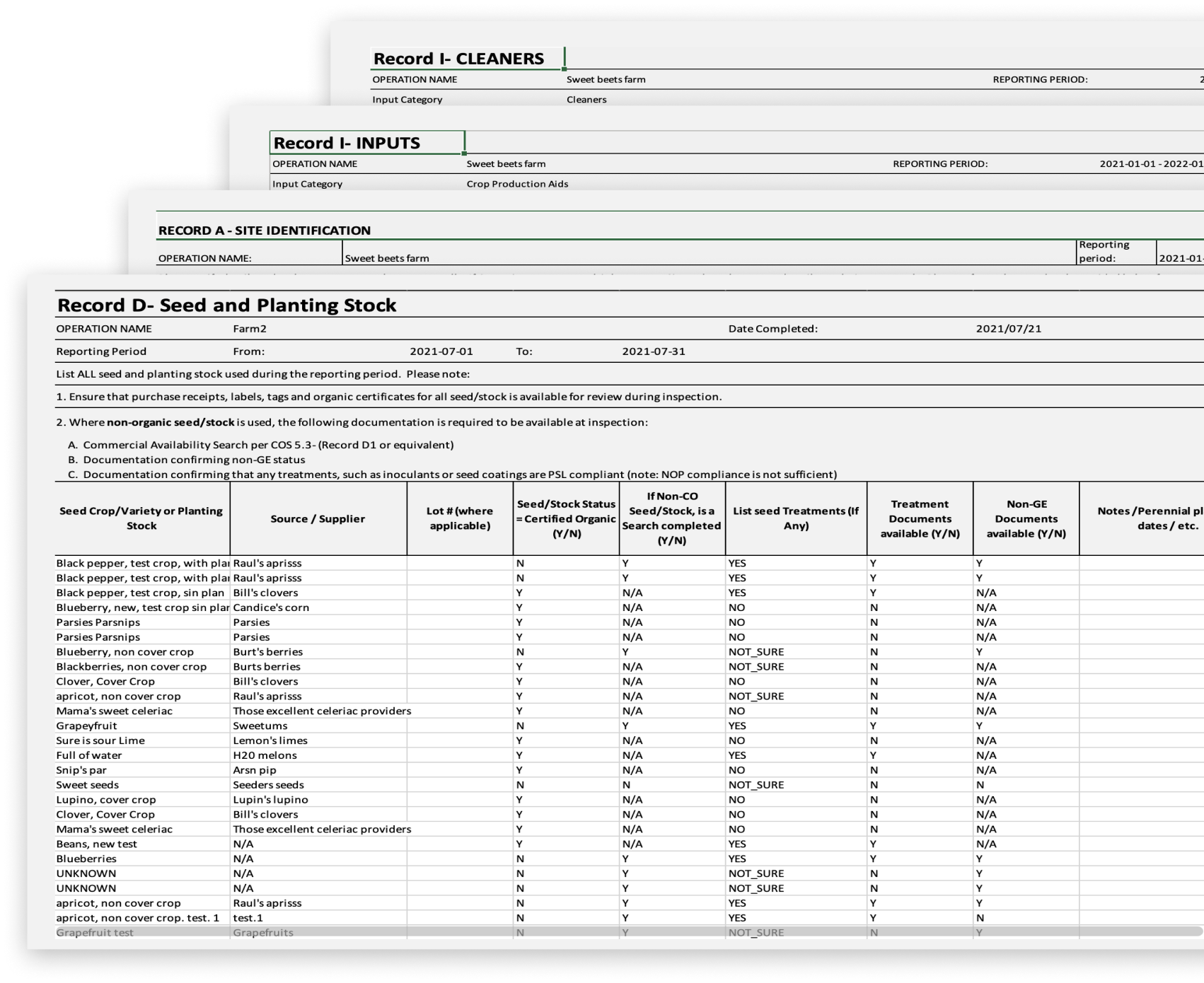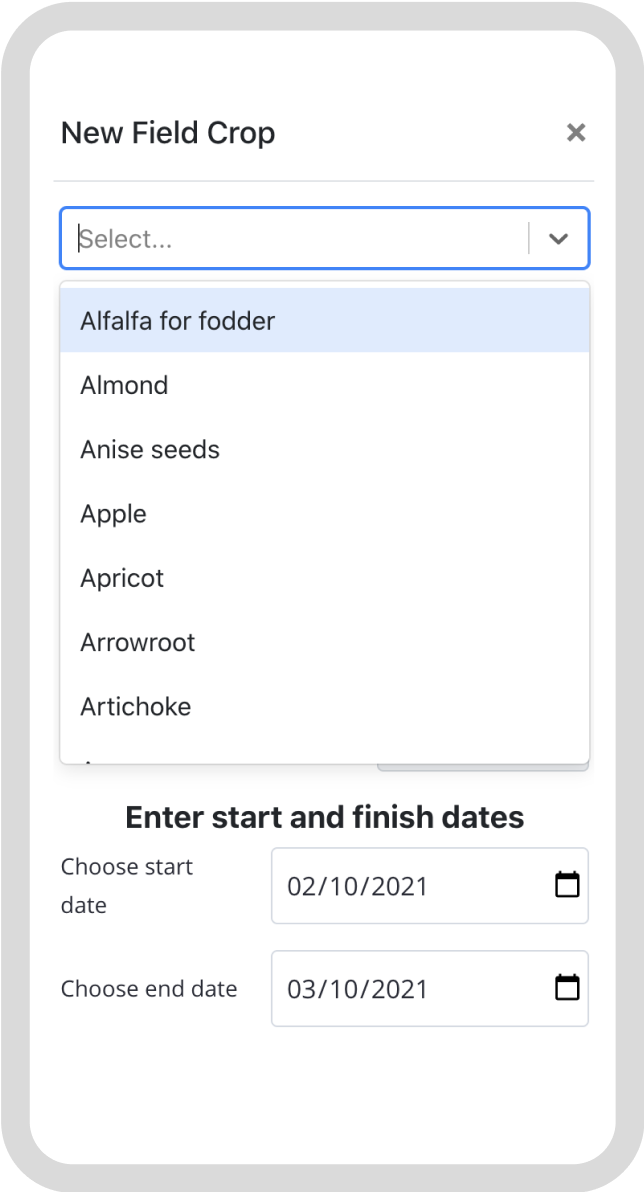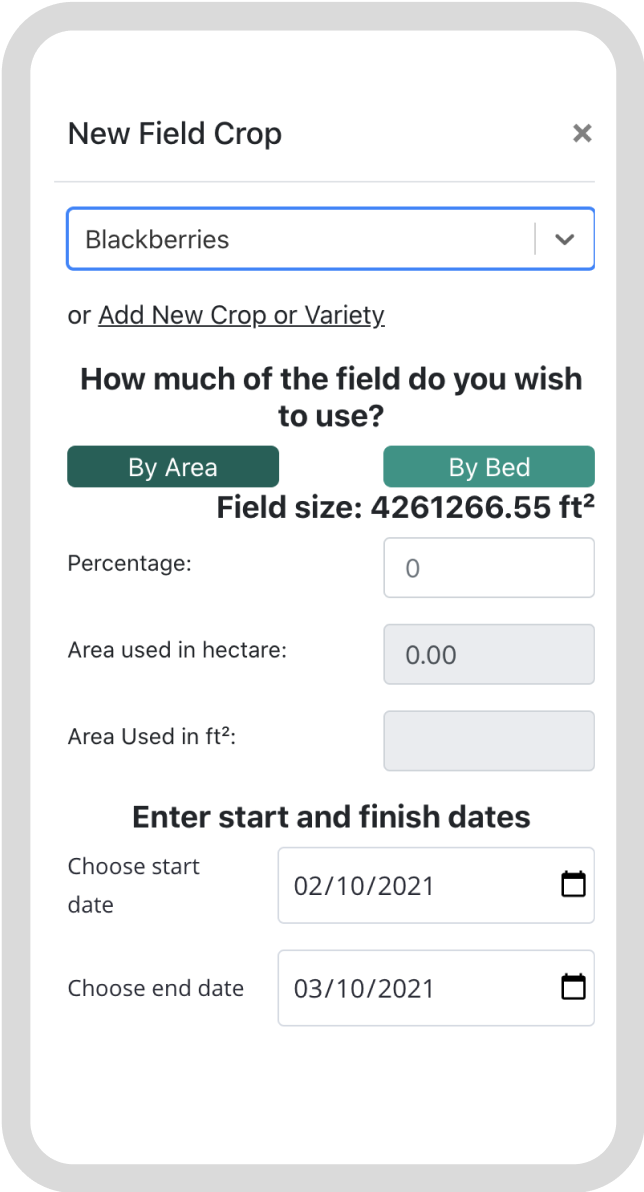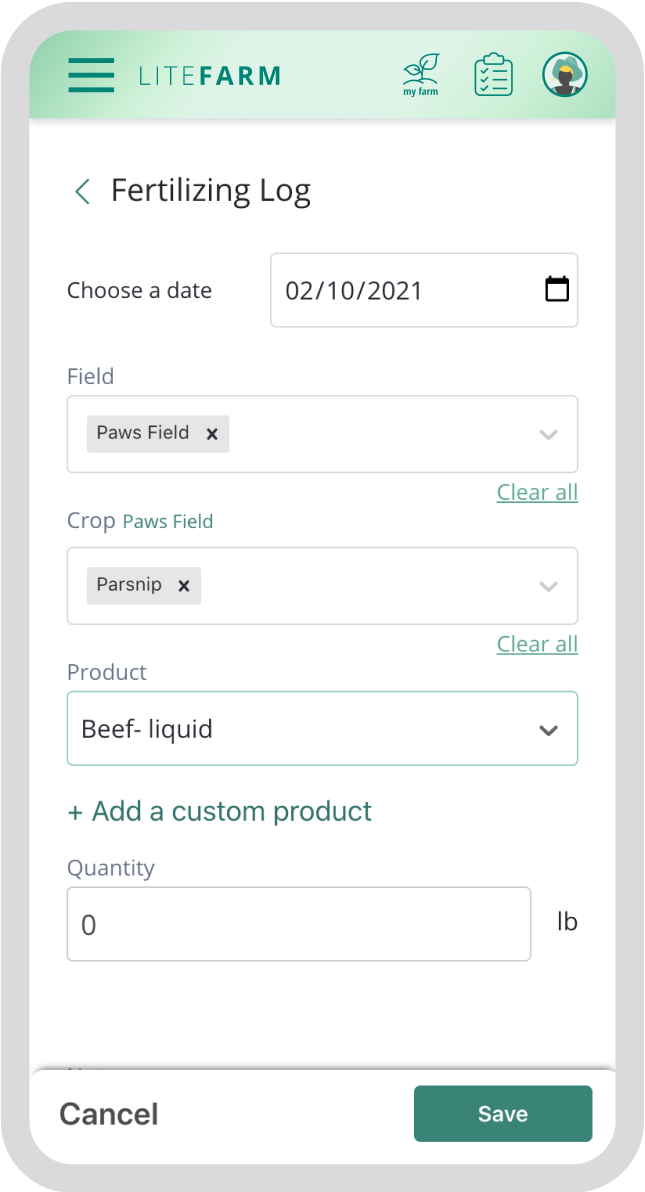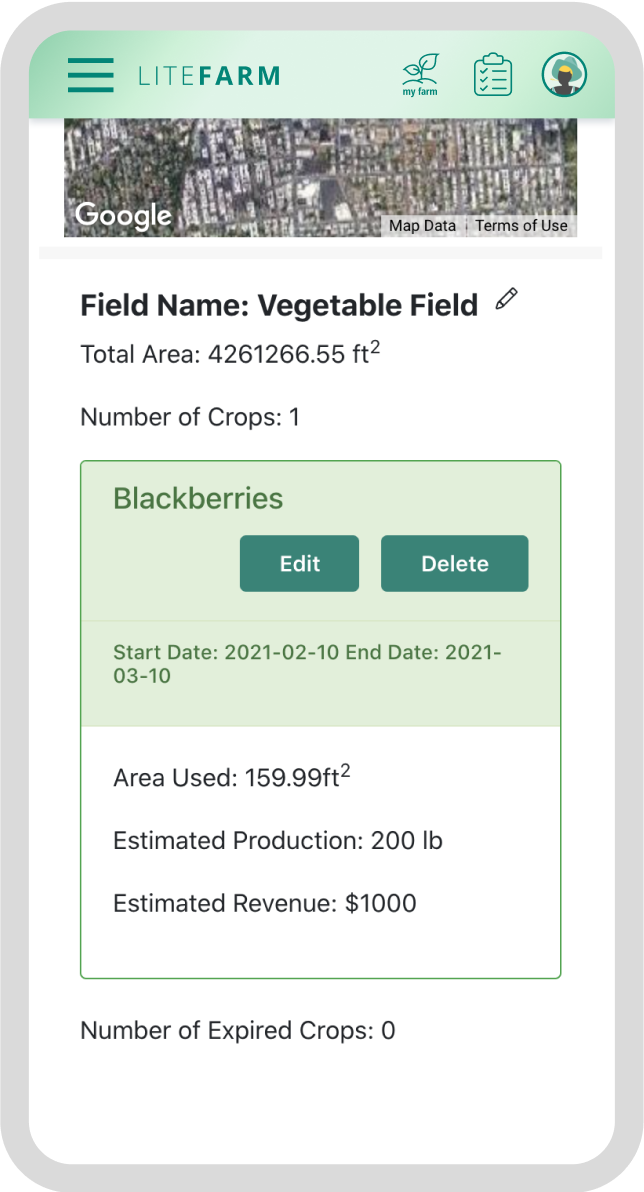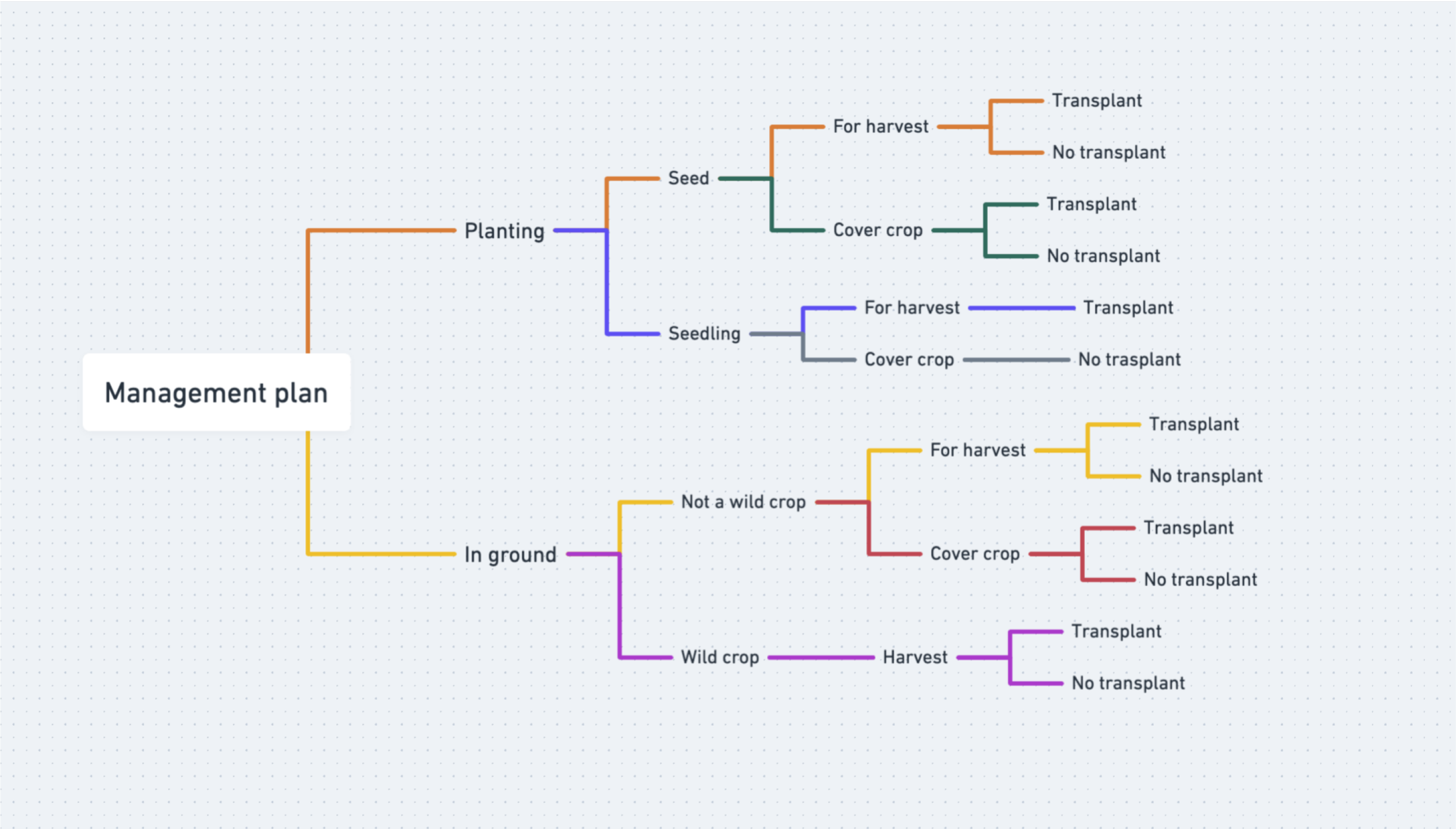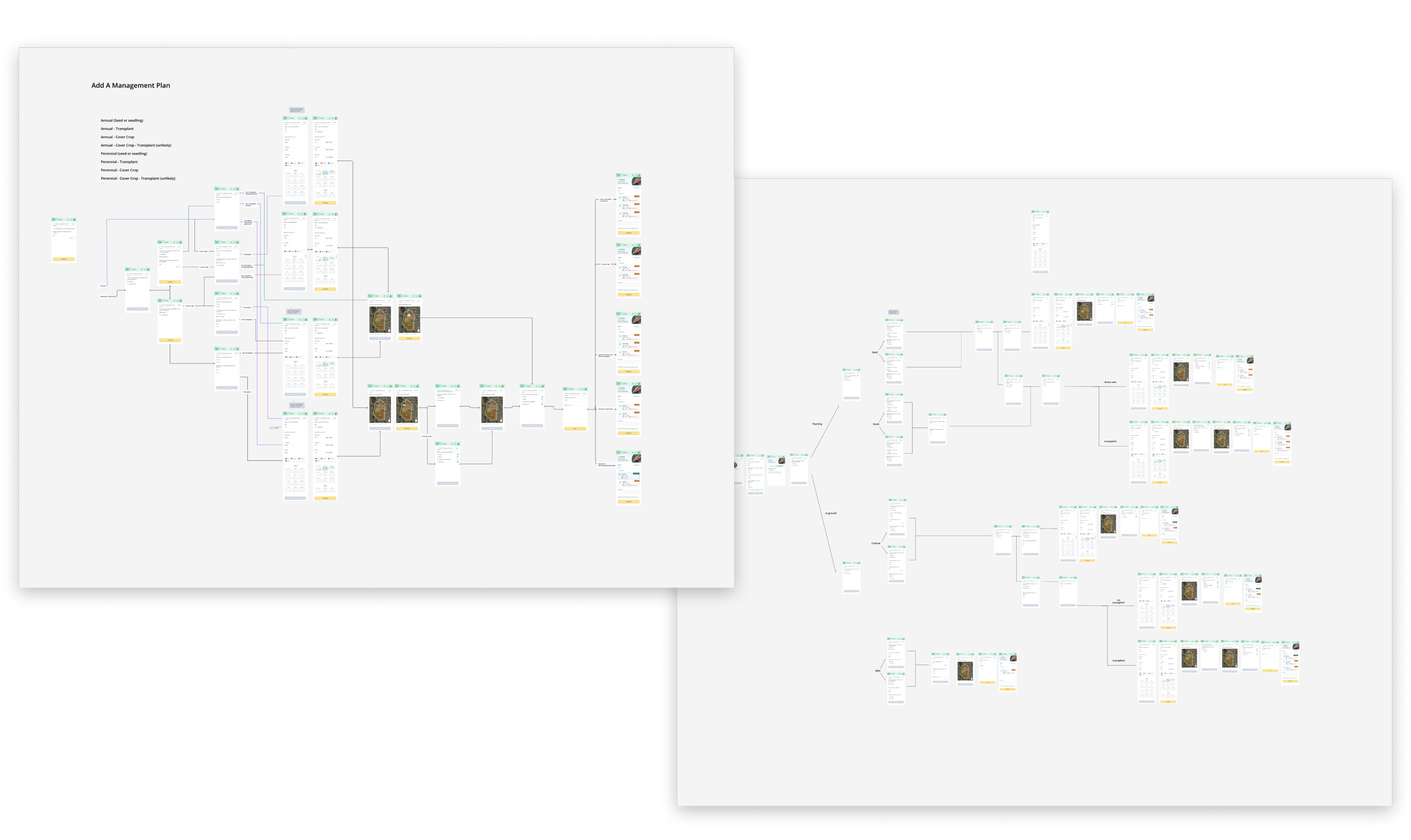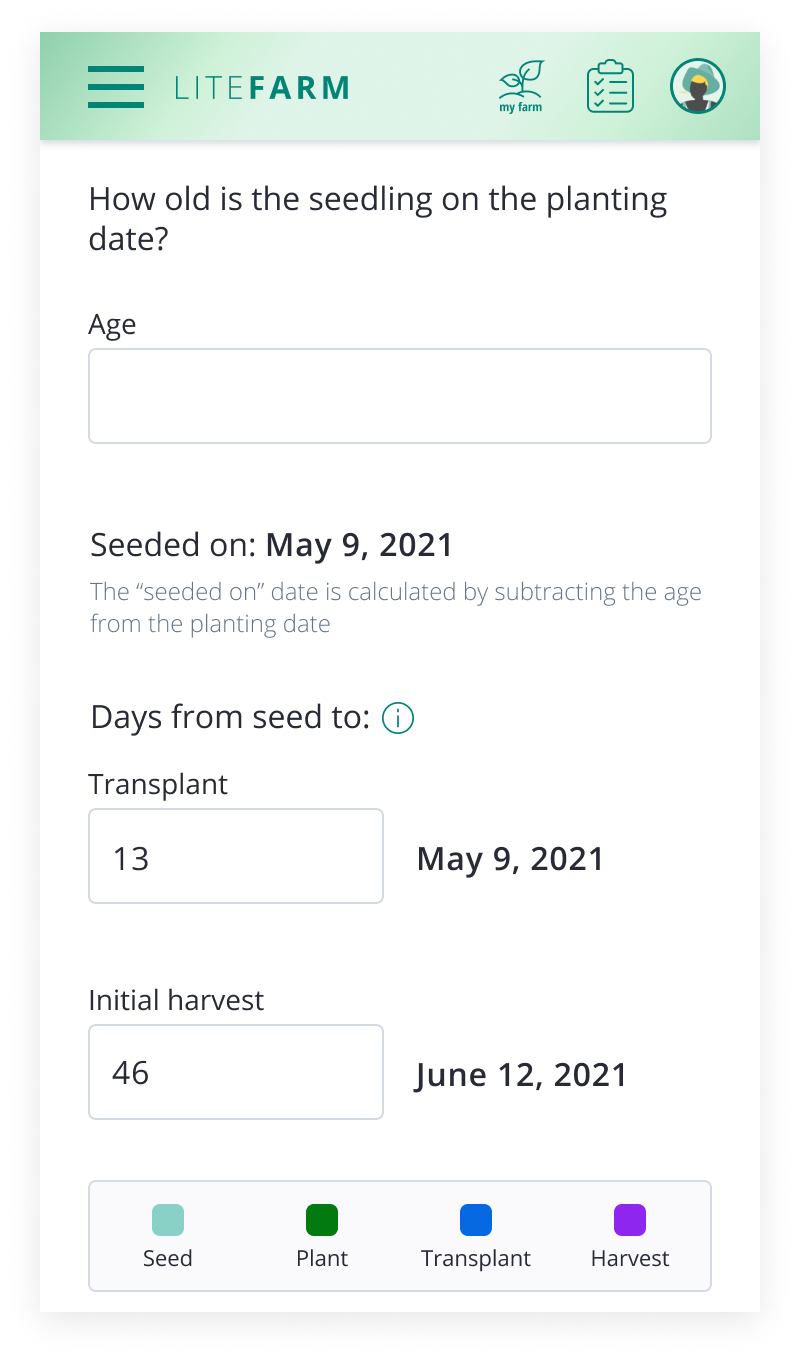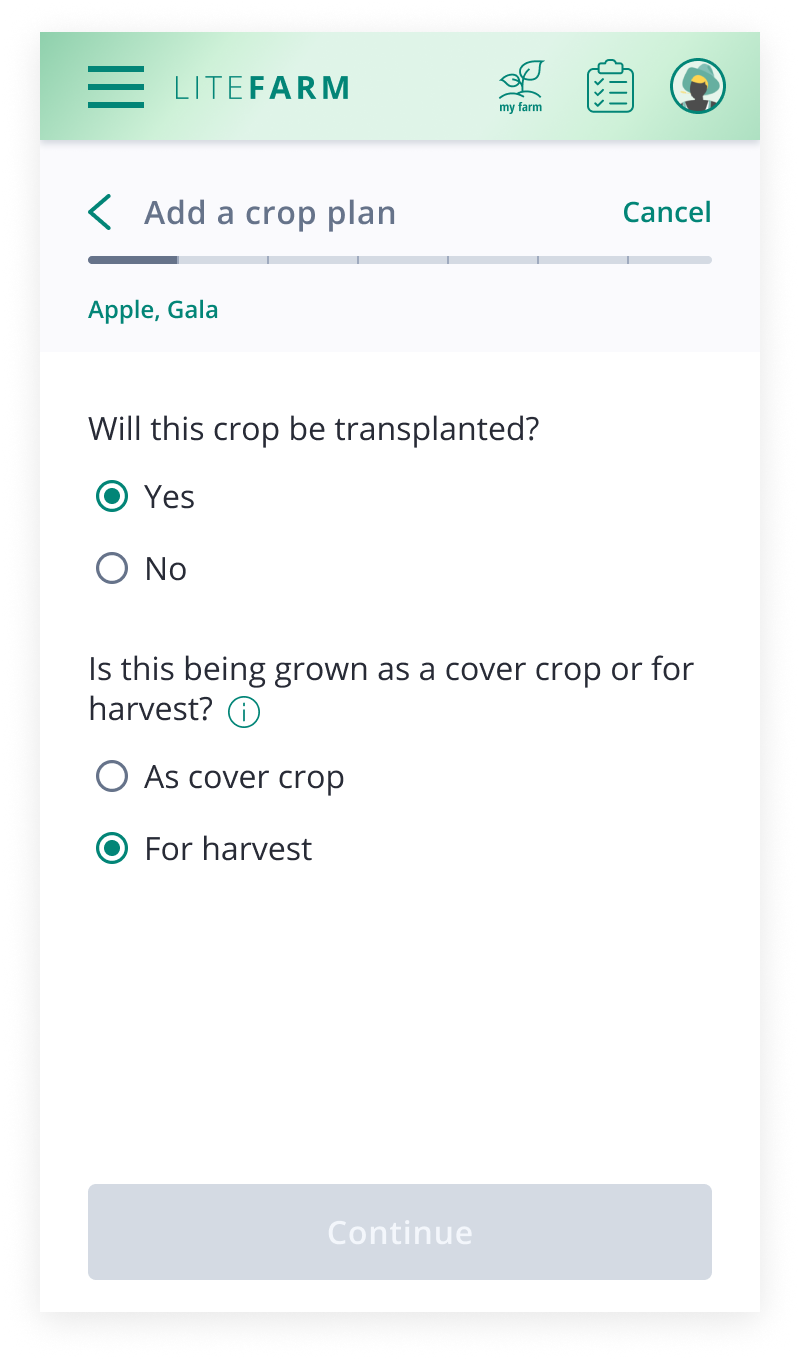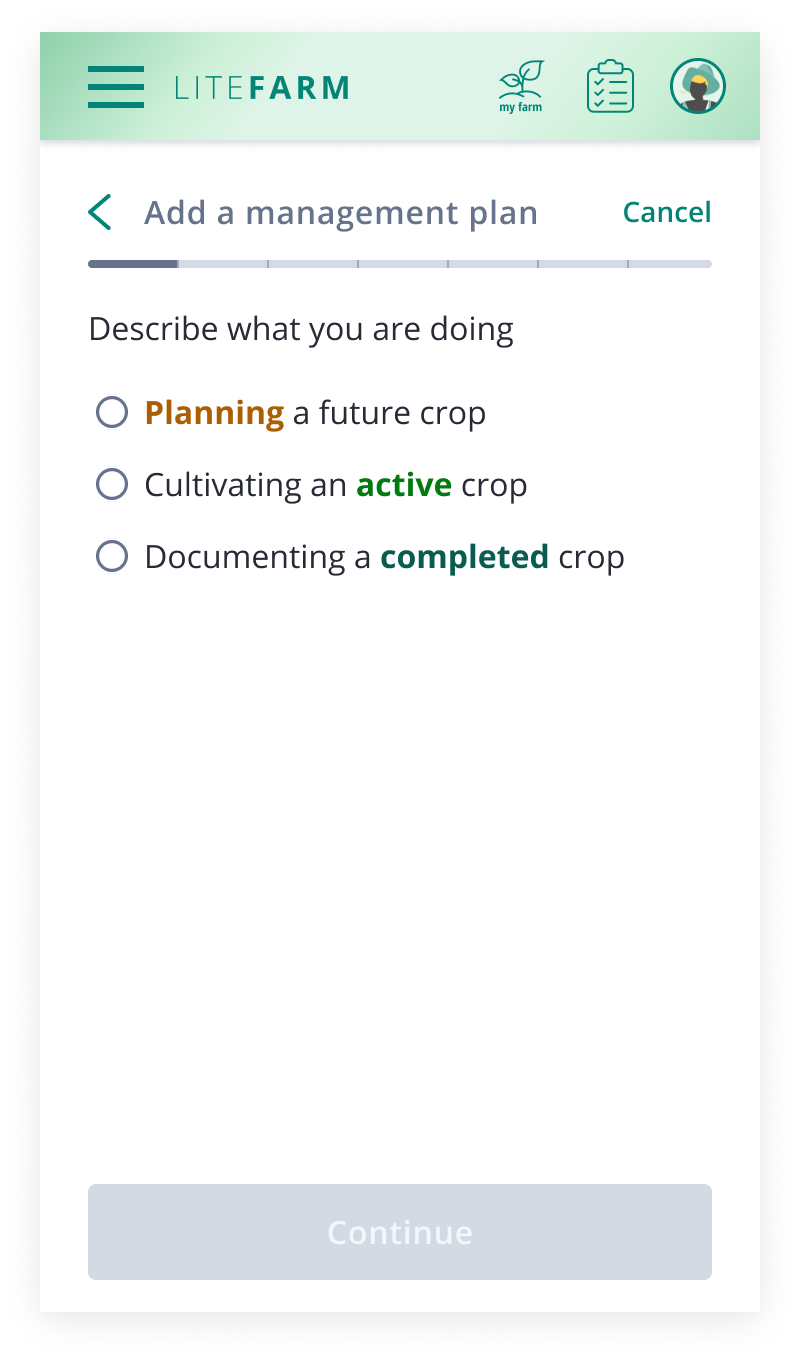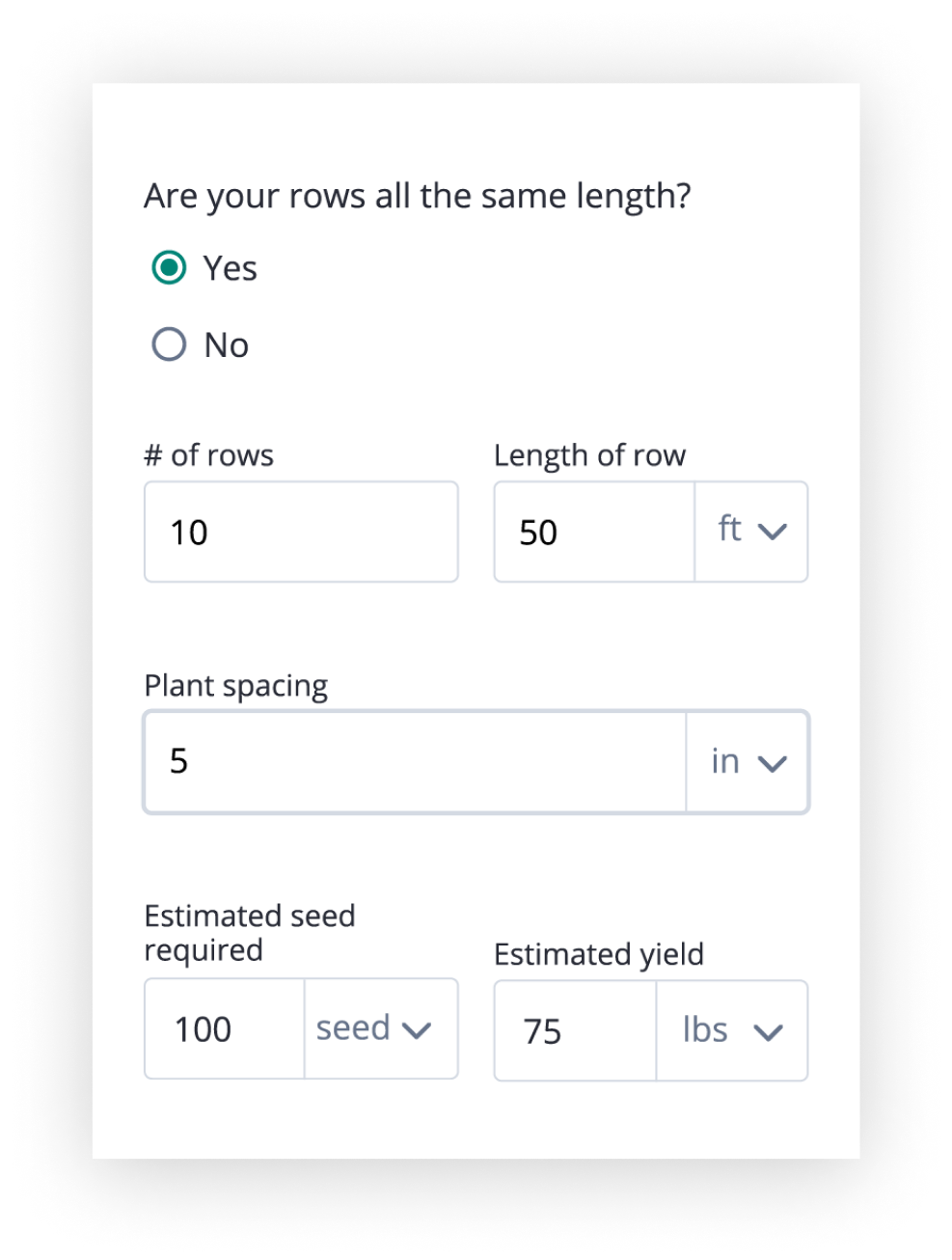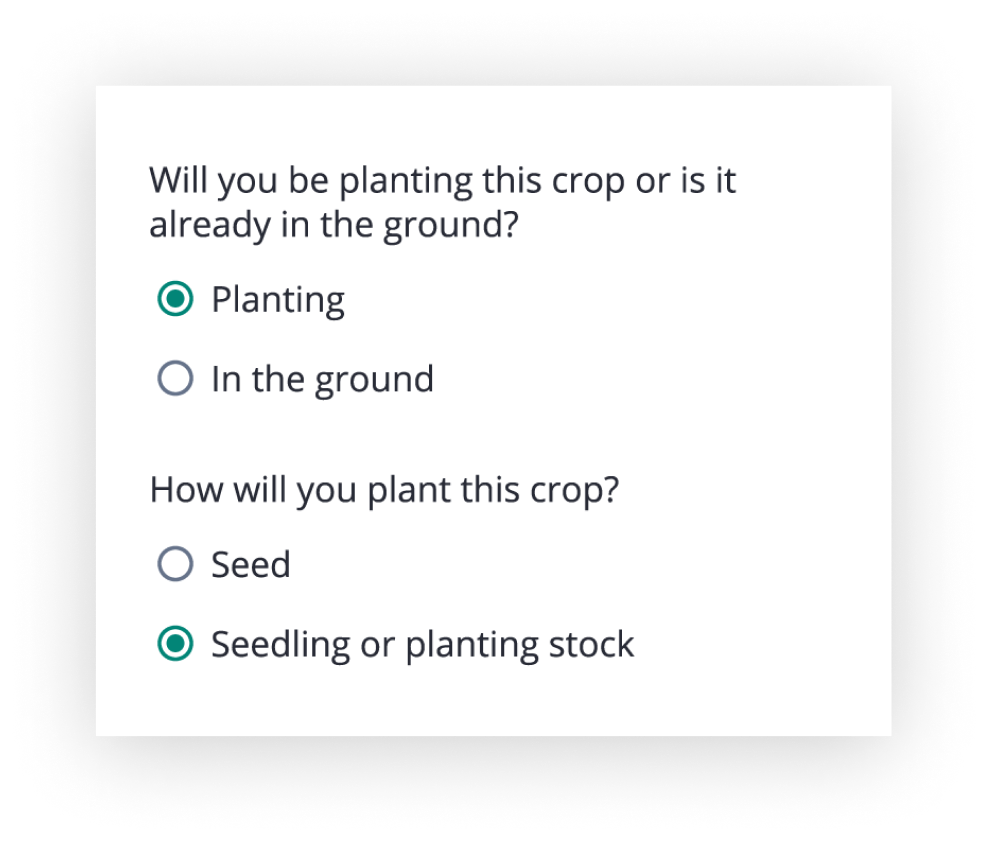
LiteFarm is a management application for small, diversified farms. It is an open-source and free tool developed out of the Centre for Sustainable Food Systems at the University of British Columbia. LiteFarm originated as a research tool. However, as the potential benefit to farmers became apparent, LiteFarm shifted to redesigning its features with farmer needs in mind.
One of the main value propositions LiteFarm wanted to offer their users was a simplified method of applying for various certifications in order to increase their crop value. As part of this objective, I was tasked with re-designing the experience of tracking crops on the farm.
A streamlined approach to tracking crops
Contributions
As the design lead, I iterated on the information architecture and wireframes of the design, developed prototypes to test with users, and prepared assets for final handoff to developers.
Information architecture
Wireframing
Prototyping
Quality assurance
User testing
Visual design
Interaction design
Responsive design
The Challenge
Tracking all the information certifiers are looking for
Having a certification benefits farmers in that it acknowledges their sustainable growing practices as well as provides a reason to sell their products at a premium value. However most certifiers require tedious tracking of all inputs and outputs on the farm. Farm inputs include the type and amount of seed, planting stock, fertilizer, pesticide, and soil amendments. LiteFarm needed a method to track all the information certifying bodies are looking for and auto-generate forms like the ones shown.
Old Design
No way to track the life cycle of a crop
The original method for logging crops within LiteFarm was not helpful to farmers. Not only was critical information not being captured, but there was no simple method to see all the work done to a crop throughout its lifespan. For instance, there was no ability to document a transplant which is a common practice. The interface was also outdated and had hierarchical issues.
After talking to farmers and collaborating with an organic certification expert, management plans (plan) were determined to be the most intuitive way to organize information about a crop. In order to add a crop into LiteFarm, the user had to provide details on the specific variety. For each planting instance, a management plan would be automated that housed all tasks associated with a specific crop planting.
Organizing the structure
After the architecture for management plans were determined, journey maps of a plan creation flow were developed. This helped capture and organize the series of questions needed to generate a management plan.
Determining the flow
Several iterations of wireframes were created for the flow in order to strike a balance between getting the information necessary and not overwhelming the user with long forms.
Prototype
Once a solution was developed a high-fidelity prototype of the management plan was created. This prototype was tested with users to find any pain points in the design and to answer targeted questions on places where more feedback was needed.
Testing it out
User feedback and changes
Below are some examples of updates made to the flow based on user input
Most issues came from confusion over terminology used. We went back and adjusted the copy and additional explanations in places were users faced confusion.
Users were not remembering what crop they were creating a management plan for. The name of the crop variety was added to the top of the display.
We can’t assume a user is planting a crop the same they are are tracking it in LiteFarm. A user could be adding a crop they planted several years ago or one they plan to seed in a few months. Adjustments to the flow and change to language were made in response.
Farmers can now manage their crops in one place
Final Design
The final design of the management plans made it possible to track all activity tied to a single crop planting. Each specific variety of crop could house multiple management plans. Each management plan provided details on the method the crop was planted and tasks associated with each plan. Farmers were also able to view plans from previous growing seasons to compare cultivations methods. Most importantly, this structure captured all the fields necessary to populate a certification form, should a farmer choose to pursue one.
Core team
Kevin Cussen
Product Manager
David Trapp
Farmer Success Coordinator
Crystal Arsenault
Organic regulations subject matter expert and liaison with Organic BC, UX Designer
The talented and dedicated LiteFarm engineering team
